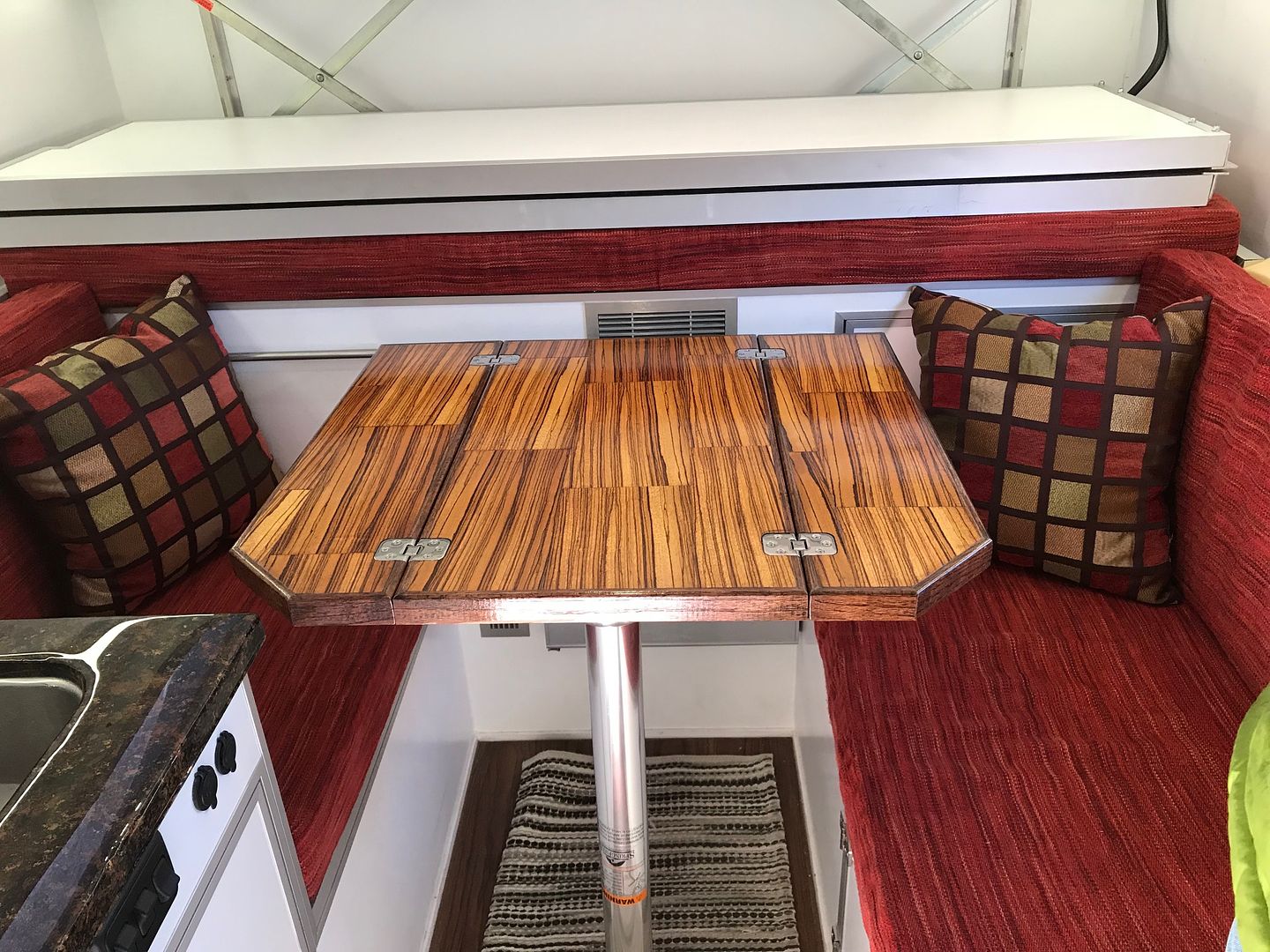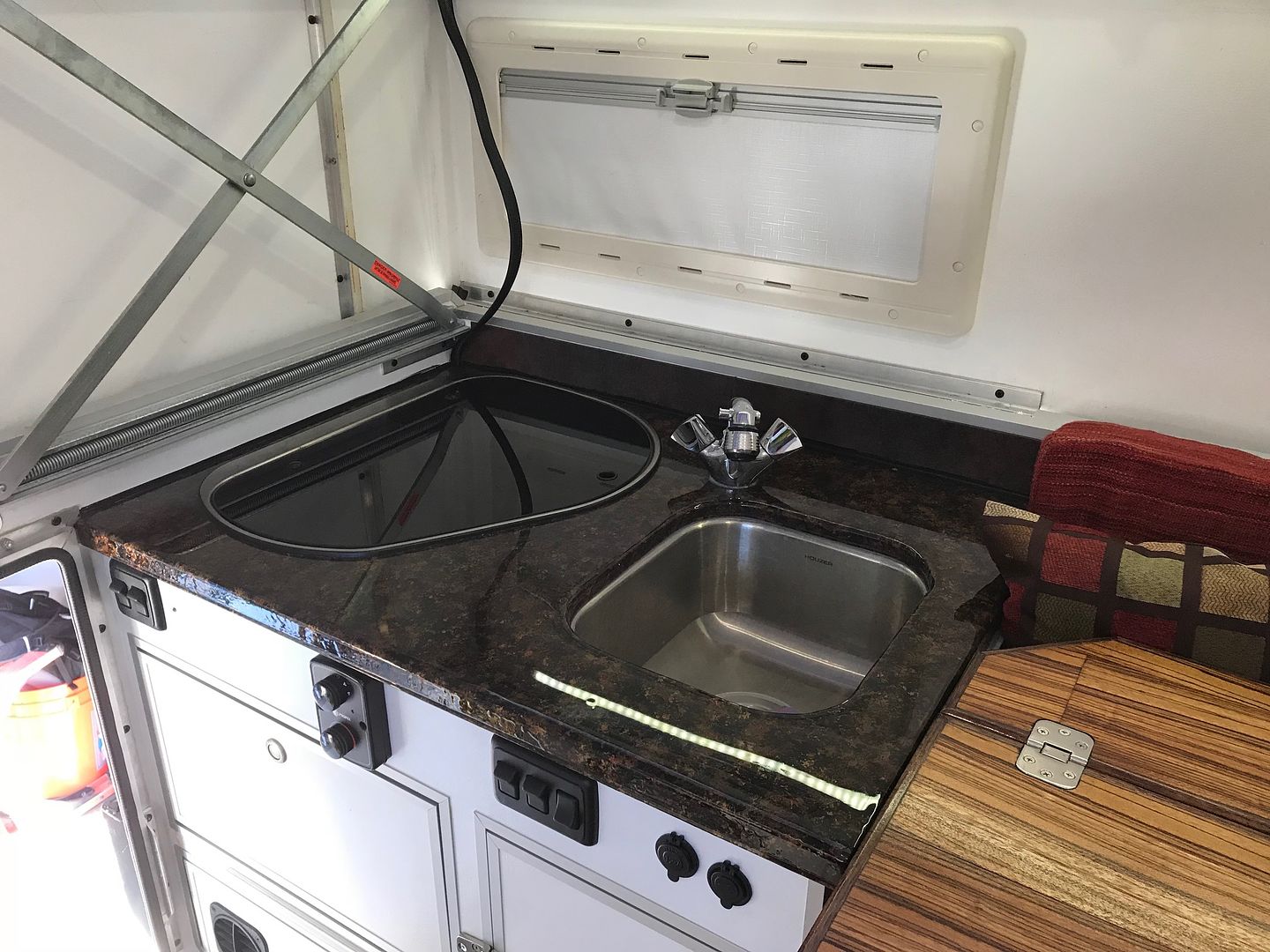CoyoteThistle
Adventurer
Okay, the long awaited update on the lithium battery charging and use.
Alternator Charging:
The first key, in my case, was to disable the trucks (2010 Frontier) clever alternator management system. I'm not totally clear on what the alternator is doing, but it is supposedly optimizing battery charging and saving gas by not constantly keeping the alternator under load. I imagine other newer vehicles have similar systems these days and options for disabling may vary. For me, I pulled a 20A fuse under the hood labeled "Alternator/Horn". This lets the alternator behave in a good old fashioned dumb way - pushing current to anything that will take it (in this case the camper battery).
I believe there is still an alternator protection circuit built in to keep the alternator from overheating - not positive on this though.
My wiring is double 6ga for the positive from the truck battery (+) to the Victron Cyrix Li-ct battery combiner. (-) is 4ga to the body of the truck close to the camper. When I start the truck, the combiner closes (connects the batteries) as expected. Charging ramps up quickly to almost 70 amps. After about one minute, the charging rate slowly drops to about 40 amps at idle and about 50 amps at higher RPM. After a few more minutes it settles in between 30 and 40 amps. This slow drop may be the alternator protecting itself, not sure. Either way, this is great - I think my alternator is rated at 120 amps so much time at 70+ amps would likely fry it. I did one real deep discharge and the alternator put 90ah back in to the battery with no apparent problems.
To stop the charging from the alternator, I set the relay trigger on the Victron BMV-700 to 14.0v. The relay triggers the Cyrix Li-ct to disconnect the batteries and charging from the alternator stops. This gets the battery to about 96% state of charge (SOC) and doesn't flirt with damaging voltages. I could edge the voltage of the relay trigger a bit higher I think to get the battery topped off but I'm playing it safe for now.
The BMV-700 relay signals the combiner to combine again when the battery voltage reaches 13.3v, which is just below the resting voltage of a "full" battery. This means the alternator should never try to charge a full battery. The SOC drops to about 94% at 13.3v. Alternator quickly charges the camper battery up to 14.0v and then they are disconnected again. Works nicely!
Solar Charging:
Didn't do careful testing of the solar system - we were mainly on the move during the day. Here's what I know for now. The Victron charge controller is set to absorption at 14.0v. This seems to tell the controller to switch to float mode at 14.0v. Float voltage is set to 13.4v so the battery voltage drops slowly towards resting voltage and then small amounts of current flow to the battery (0.1v isn't much of a gradient to push current over so even with 200w of panels in full sun, it's pushing less than 2 amps when the battery is at 13.2x volts). This keeps the battery at around 95% SOC all day with the fridge and other small loads running.
Battery Performance:
Pretty impressive. Used the hot water heater off the battery a couple times. Took an hour to get up to 140F (manual says it should take 80 minutes). Battery maintained 13.0v with water heater, fridge and lights on (30+amps of draw). Battery was at 10% SOC by morning but fridge was still running and all accessories working well. Battery was full after about 2.5 hours of driving the next day. Not sure how much lead acid would be needed to accomplish this.
So, in a nutshell, I think this set up works. See post #40 in this thread for some more details -be aware that some of the numbers have changed from then to now.
I didn't test the low voltage protection (Victron Battery Protect set at 12.0v) or the BMS protection circuits (disconnects everything at 14.6v or 10.4v) but will get to that at some point.
Very curious to hear opinions of what I might be doing wrong or missing with this setup.
I might duplicate this post (more or less) in the "Power Systems" sub-forum to get some other eyes and opinions on the setup.
matt
Alternator Charging:
The first key, in my case, was to disable the trucks (2010 Frontier) clever alternator management system. I'm not totally clear on what the alternator is doing, but it is supposedly optimizing battery charging and saving gas by not constantly keeping the alternator under load. I imagine other newer vehicles have similar systems these days and options for disabling may vary. For me, I pulled a 20A fuse under the hood labeled "Alternator/Horn". This lets the alternator behave in a good old fashioned dumb way - pushing current to anything that will take it (in this case the camper battery).
I believe there is still an alternator protection circuit built in to keep the alternator from overheating - not positive on this though.
My wiring is double 6ga for the positive from the truck battery (+) to the Victron Cyrix Li-ct battery combiner. (-) is 4ga to the body of the truck close to the camper. When I start the truck, the combiner closes (connects the batteries) as expected. Charging ramps up quickly to almost 70 amps. After about one minute, the charging rate slowly drops to about 40 amps at idle and about 50 amps at higher RPM. After a few more minutes it settles in between 30 and 40 amps. This slow drop may be the alternator protecting itself, not sure. Either way, this is great - I think my alternator is rated at 120 amps so much time at 70+ amps would likely fry it. I did one real deep discharge and the alternator put 90ah back in to the battery with no apparent problems.
To stop the charging from the alternator, I set the relay trigger on the Victron BMV-700 to 14.0v. The relay triggers the Cyrix Li-ct to disconnect the batteries and charging from the alternator stops. This gets the battery to about 96% state of charge (SOC) and doesn't flirt with damaging voltages. I could edge the voltage of the relay trigger a bit higher I think to get the battery topped off but I'm playing it safe for now.
The BMV-700 relay signals the combiner to combine again when the battery voltage reaches 13.3v, which is just below the resting voltage of a "full" battery. This means the alternator should never try to charge a full battery. The SOC drops to about 94% at 13.3v. Alternator quickly charges the camper battery up to 14.0v and then they are disconnected again. Works nicely!
Solar Charging:
Didn't do careful testing of the solar system - we were mainly on the move during the day. Here's what I know for now. The Victron charge controller is set to absorption at 14.0v. This seems to tell the controller to switch to float mode at 14.0v. Float voltage is set to 13.4v so the battery voltage drops slowly towards resting voltage and then small amounts of current flow to the battery (0.1v isn't much of a gradient to push current over so even with 200w of panels in full sun, it's pushing less than 2 amps when the battery is at 13.2x volts). This keeps the battery at around 95% SOC all day with the fridge and other small loads running.
Battery Performance:
Pretty impressive. Used the hot water heater off the battery a couple times. Took an hour to get up to 140F (manual says it should take 80 minutes). Battery maintained 13.0v with water heater, fridge and lights on (30+amps of draw). Battery was at 10% SOC by morning but fridge was still running and all accessories working well. Battery was full after about 2.5 hours of driving the next day. Not sure how much lead acid would be needed to accomplish this.
So, in a nutshell, I think this set up works. See post #40 in this thread for some more details -be aware that some of the numbers have changed from then to now.
I didn't test the low voltage protection (Victron Battery Protect set at 12.0v) or the BMS protection circuits (disconnects everything at 14.6v or 10.4v) but will get to that at some point.
Very curious to hear opinions of what I might be doing wrong or missing with this setup.
I might duplicate this post (more or less) in the "Power Systems" sub-forum to get some other eyes and opinions on the setup.
matt
Last edited:








